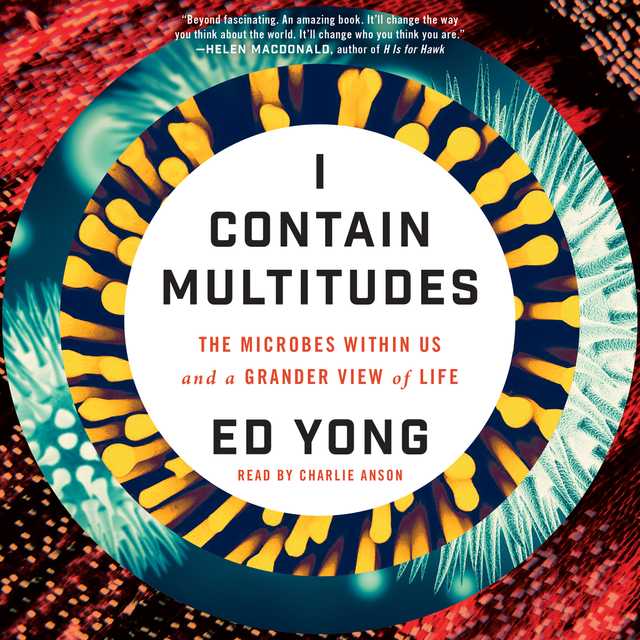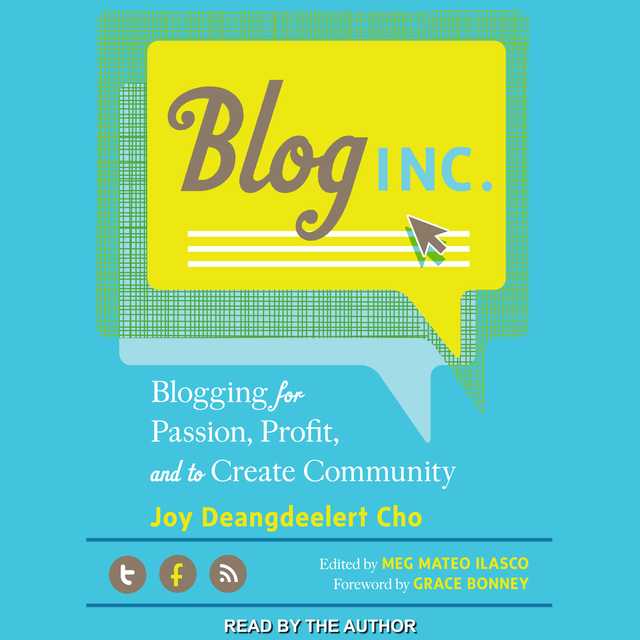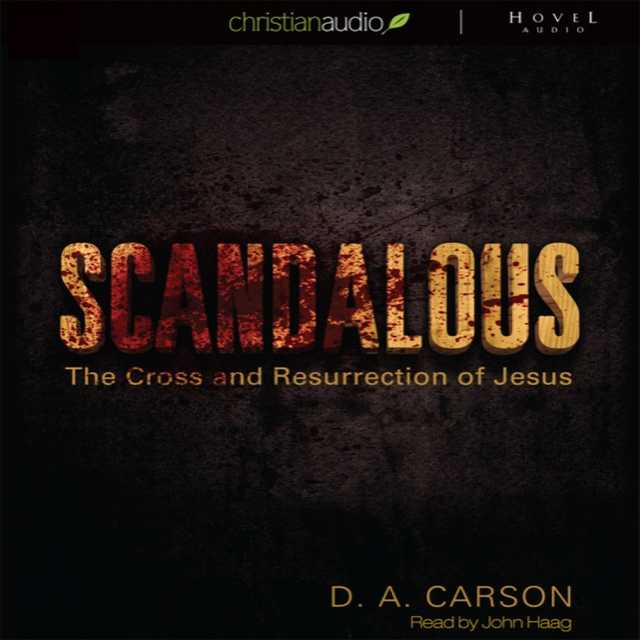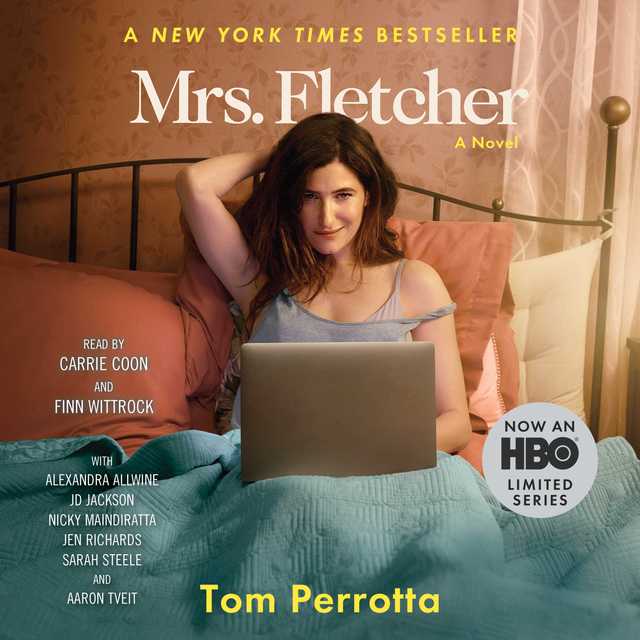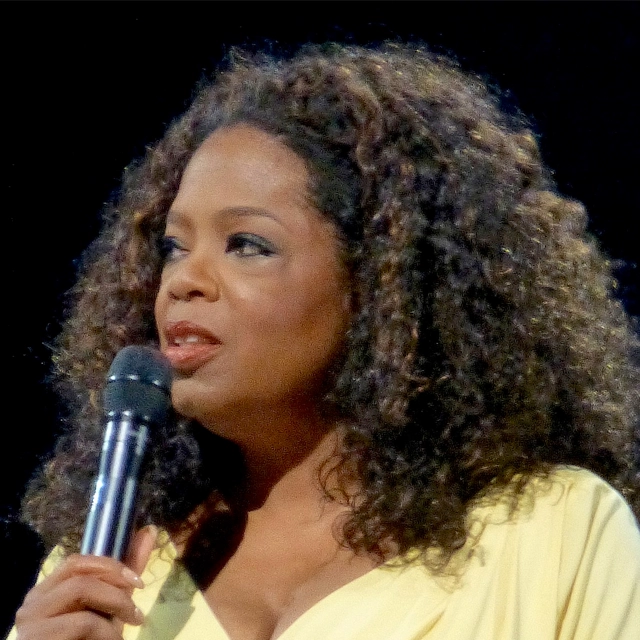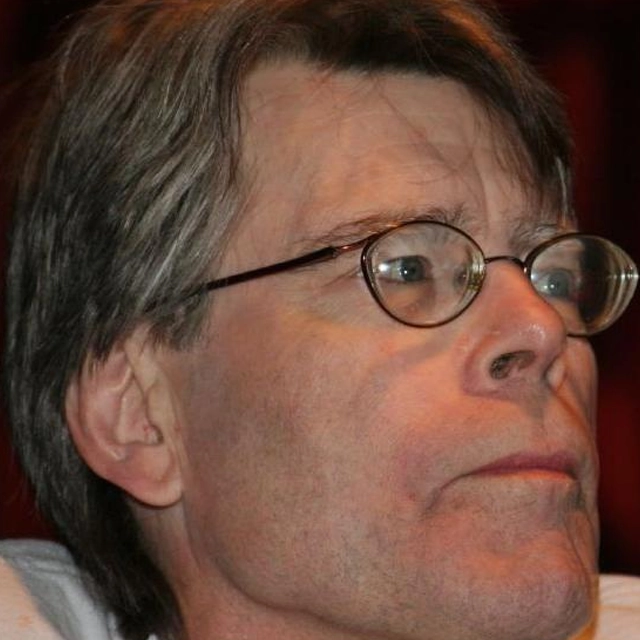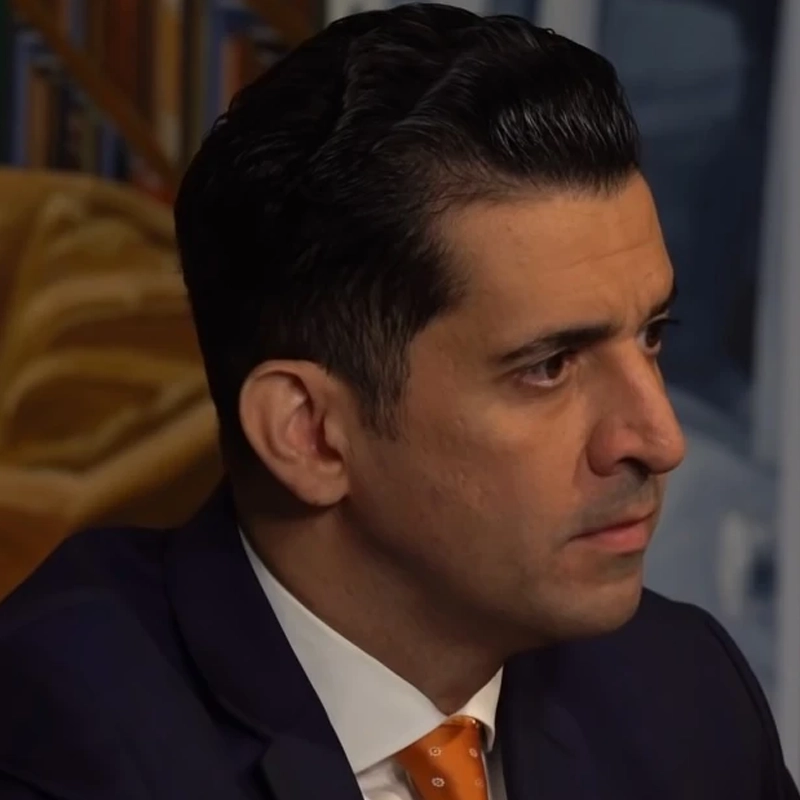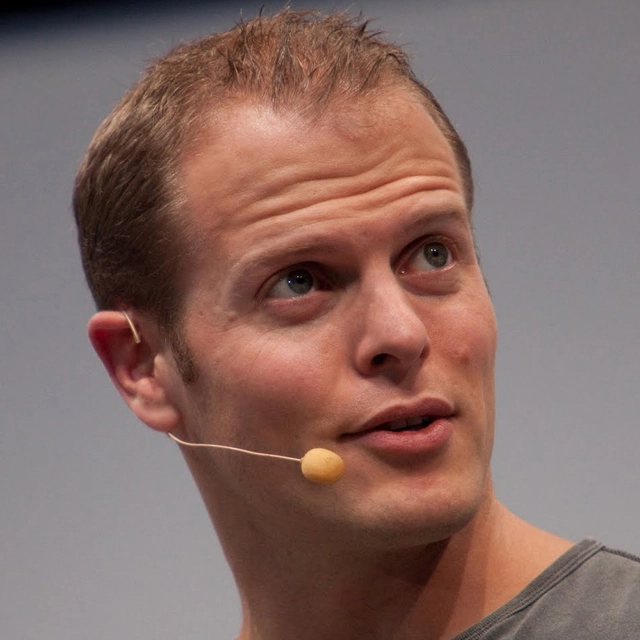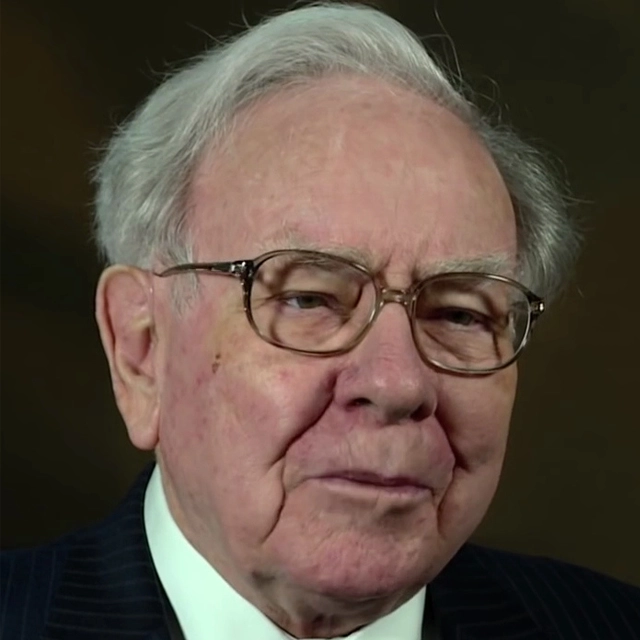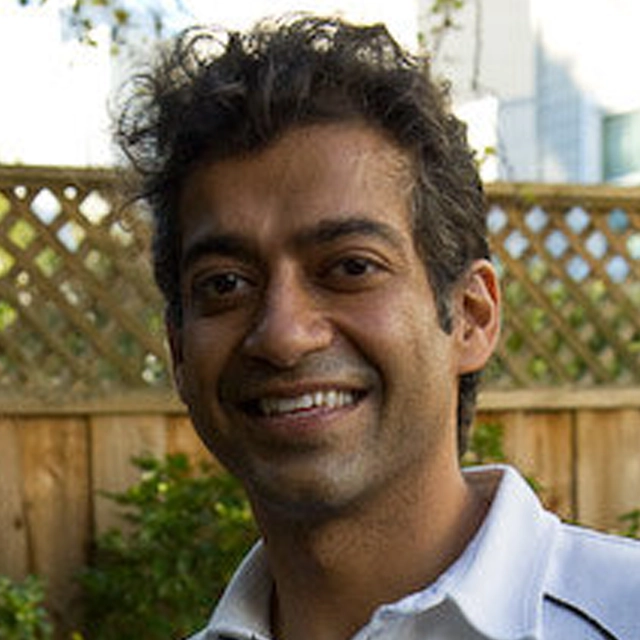I Contain Multitudes Audiobook Summary
New York Times Bestseller
New York Times Notable Book of 2016
NPR Great Read of 2016
Economist Best Books of 2016
Brain Pickings Best Science Books of 2016
Smithsonian Best Books about Science of 2016
Science Friday Best Science Book of 2016
A Mother Jones Notable Read of 2016
A Bill Gates “Gates Notes” Pick
MPR Best Books of 2016
Chicago Public Library Best of the Best Books of 2016
Minnesota Star-Tribune Best of the Year
A Kirkus Best Book of the Year
A PW Best Book of the Year
Guardian Best of the Year
Times (London) Best of the Year
Joining the ranks of popular science classics like The Botany of Desire and The Selfish Gene, a groundbreaking, wondrously informative, and vastly entertaining examination of the most significant revolution in biology since Darwin–a “microbe’s-eye view” of the world that reveals a marvelous, radically reconceived picture of life on earth.
Every animal, whether human, squid, or wasp, is home to millions of bacteria and other microbes. Pulitzer Prize-winning author Ed Yong, whose humor is as evident as his erudition, prompts us to look at ourselves and our animal companions in a new light–less as individuals and more as the interconnected, interdependent multitudes we assuredly are.
The microbes in our bodies are part of our immune systems and protect us from disease. In the deep oceans, mysterious creatures without mouths or guts depend on microbes for all their energy. Bacteria provide squid with invisibility cloaks, help beetles to bring down forests, and allow worms to cause diseases that afflict millions of people.
Many people think of microbes as germs to be eradicated, but those that live with us–the microbiome–build our bodies, protect our health, shape our identities, and grant us incredible abilities. In this astonishing book, Ed Yong takes us on a grand tour through our microbial partners, and introduces us to the scientists on the front lines of discovery. It will change both our view of nature and our sense of where we belong in it.
Other Top Audiobooks
I Contain Multitudes Audiobook Narrator
Charlie Anson is the narrator of I Contain Multitudes audiobook that was written by Ed Yong
Ed Yong is a science writer who reports for The Atlantic. For his coverage of the COVID-19 pandemic, he won the Pulitzer Prize in explanatory reporting, the George Polk Award for science reporting, and other honors. His first book, I Contain Multitudes, was a New York Times bestseller. He is based in Washington, DC.
About the Author(s) of I Contain Multitudes
Ed Yong is the author of I Contain Multitudes
More From the Same
- Author : Ed Yong
- An Immense World
- Publisher : HarperAudio
- Abraham
- American Gods [TV Tie-In]
- Dead Ringer
- House of Sand and Fog
- Prey
I Contain Multitudes Full Details
| Narrator | Charlie Anson |
| Length | 9 hours 52 minutes |
| Author | Ed Yong |
| Category | |
| Publisher | HarperAudio |
| Release date | August 09, 2016 |
| ISBN | 9780062472595 |
Subjects
The publisher of the I Contain Multitudes is HarperAudio. includes the following subjects: The BISAC Subject Code is Medical, Microbiology
Additional info
The publisher of the I Contain Multitudes is HarperAudio. The imprint is HarperAudio. It is supplied by HarperAudio. The ISBN-13 is 9780062472595.
Global Availability
This book is only available in the United States.
Goodreads Reviews
Will
February 02, 2022
You’ve got company. Carol Anne Freeling was certainly right when she said, “They’re hee-ur,” well maybe not enraged spirits, but there are certainly plenty of entities present to which we have paid insufficient attention. Maybe Regan MacNeil was closer to the mark in proclaiming “We are legion.” When Orson Welles said “We’re born alone, we live alone, we die alone,” he was mistaken. Even when we are alone, we are never alone. We exist in symbiosis—a wonderful term that refers to different organisms living together. Some animals are colonized by microbes while they are still unfertilized eggs; others pick up their first partners at the moment of birth. We then proceed through our lives in their presence. When we eat, so do they. When we travel, they come along. When we die, they consume us. Every one of us is a zoo in our own right—a colony enclosed within a single body. A multi-species collection. An entire world. Trying to map what it is to be a physical human being, in something like the Human Genome Project, is a daunting task. But our genes tell only part of our story, like a novel with a beginning and ending but no middle. That middle is taken up by the vast array of other life that exists within our bodies. While the guests we harbor may not necessarily be in league with Satan, they are a mixed lot. They mean us no harm, particularly, and we have evolved very workable symbiotic relationships with them, but they are not necessarily our friends either. They took up residence for their own benefit and will stick around and provide benefits to us only as long as we provide what they need, like that girl/boy friend you remember with gritted teeth.I won’t say this book will blow your mind, but this is your brainAnd it’s not even Mardi Gras – from the Brain Association of MississippiThis is your brain after reading this bookShame about that haircut[In the interest of full disclosure, it should be known that every day when my wife was reading this book, she would walk in the door and tell me of yet another thing she had read that had totally blown her mind. Not that my mind didn't go Ka-Boom when I read it. It certainly did. But hers was blown first. I only steal from the best. ]I Contain Multitudes will change how you understand not only the human body, but all the biota on the planet, hell, the universe. It will help you understand how it can happen that diseases like the flu can adapt so quickly to our latest attempts to stamp them out. It will help you understand why coral reefs are dying. It will give you some new words that help keep the new knowledge manageable. (My favorite is dysbiosis which is what it sounds like, a biological parallel to dystopia, with a hint of enforced disorganization.) It will expand your appreciation for how microbial biology works within people and in the world. It will offer you hope that there can be a future in which many of our maladies will not only be diagnosable, but will be treatable with the introduction of the right, specific probiotic. It will do your dishes and massage your feet. Well, ok, not the last two, but KABOOM, big new look-at-the-world stuff. Ok, you biologist types, pre-med, med, post med, anti-med, wearers of white lab coats, whatever the length, you know this stuff, at least I hope you do. But for most of the rest of us it is indeed a big change, a new layer of reality, well maybe not entirely new, but new enough to go KABOOM!Our intro to the world of which Yong writes, antibiotics, is probably akin to the one WW II bombadiers had through their bombsites. Amazing invention/discovery, antibiotics. They do a great job of wiping out pathogens, the nasties that make us ill, well, some of them anyway. Other harmful microbial types, the viral ones, roll their eyes at incoming antibiotics and keep on with what they are up to. However, as with items dropped from passing aircraft, the use of antibiotics entails considerable collateral damage, as the human body is a container for a vast array of microbial life. One might well envision millions of non-pathogenic residents shaking their fists as the incomings not only wipe out the harmful bugs, but vast numbers of the helpful ones as well. Ed Yong offers a more on-the-ground look, filling us in on what is actually going on inside, and how this part of what’s inside relates to that other part.If these folks can have an entire civilization inside a locker, just imagine what might develop in your liver or large intestine.If you don’t know who Ed Yong is, it’s a good bet that you will before too long. Yong is a popular science guy, a Neal DeGrasse Tyson, Bill Nye, Mary Roach, Jacques Cousteau, David Attenborough, Carl Sagan sort, a person who can take the wild, wonderful and fascinating things that are going on in the world of science and distill them all down for public consumption without making viewers’ or readers’ eyes glaze over, or listeners’ ears suddenly clog, without making you feel like an ill-educated dolt, and he accomplishes this with enough humor to produce a fair number of smiles and an occasional LOL. (Not in Mary Roach’s league for humor, but hey, who is?) He is an award-winning science writer at The Atlantic, whose work has appeared in a wide range of publications, from The New York Times to Nature, from The Guardian to Wired, from Slate to Scientific American, and on and on. He splits his time between London and DC, and I would not be at all surprised if he dashes back and forth in a TARDIS. I have provided links in EXTRA STUFF that will lead you down rabbit holes of fun material from Yong that may take you a while to leave.Ed Yong - From SpeakerpediaAmong the many surprises you will encounter here are a squid with its own high-beams, the microbial advantage of vaginal birth, the impact of gut microbes on mood, why a third of human milk is set aside for our guests (protection payments?), the relationship between the US Navy and mucus, why no man may be an island, but we may be archipelagos, and vats more. There is serious consideration given to how our relationships with this invisible world evolved: …animals emerged in a world that had already been teeming with microbes for billions of years. They were the rulers of the planet long before we arrived. And when we did arrive, of course we evolved ways of interacting with the microbes around us. It would be absurd not to, like moving into a new city wearing a blindfold, earplugs, and a muzzle. Besides, microbes weren’t just unavoidable: they were useful. They fed the pioneering animals. Their presence also provided valuable cues to areas rich in nutrients, to temperatures conducive to life, or flat surfaces upon which to settle. By sensing these cues, pioneering animals gained valuable information about the world around them…hints of those ancient interactions still abound today. “It all depends.” As if life wasn’t complicated enough. Don’t you just love it when you are looking for help and the person you are asking responds with “It all depends.” And it really does, and it really will. What will be different, though, will be that your caregiver will have a much better idea than most caregivers can possibly have today. They will be able to look at a profile from a type of blood test and match potential solutions to the bacteria living in your gut, or wherever else in your two-legged bacteria condo might pertain. This knowledge is still in its infancy – at least a broad knowledge, but it is coming, and has the potential to make meaningful improvements in our health. As microbiologist Patrice Cani told me, “The future will be a la carte.”And in this a la carte future, we won’t have to stop at picking the right bacteria for the job. Some scientists are picking the right genes for the job, and combining them into artisanal bacteria. Rather than just recruiting species with the right abilities, they are tinkering with the microbes themselves to endow them with new skills. Balance – from Explainxkcd.comThis raises some concerns, although they do not get a lot of attention here. If scientists can develop designer probiota to ameliorate suffering, there will always be evil-doers eager to use new technology to make designer biota intended to act as pathogens. In fact that is pretty much my sole gripe about this book. I wish more space had been devoted to the potential dangers of this advancing treatment modality. Just ask yourself, What would ISIS do?The title of Ed Yong’s book may not be up there with The Selfish Gene, Silent Spring, or Guns, Germs and Steel but what it lacks in snappy-ness it more than makes up for in content. This is a smart, readable explanation of one of the major ongoing scientific revolutions of our time. If you look deep inside yourself you will know that this is absolutely must-read material. Publication-----August 9, 2016 - Hardcover-----January 16, 2018 - Trade PaperReview first posted – July 1, 2016==========In the summer of 2019 GR reduced the allowable review size by 25%, from 20,000 to 15,000 characters. In order to accommodate the text beyond that I have moved it to the comments section directly below.
Always
July 29, 2020
I feel like this book really exemplifies what I want from a science book written for a mass audience. It made everything really accessible and easy to understand without sacrificing on providing details or explanations. It provides a lot of citations so I can go look up the specific research papers and experiments mentioned that are of most interest to me, which I did. It also just connected research to larger ideas and theories for why things work the way they do. I think the whole point of science and the interest in it has to do with its ability to provide insight and answers into the why of things, at least for me. I also think Yong was really good about explaining the limitations of the research while also making the reader excited about where things could potentially go. Like I think it can be quite hard to straddle that line between talking about the exciting potential of something while also being clear that it might not go anywhere and that there's a lot of complexity and limitation in science. Also he mentioned one of my favorite books of all time, The Vital Question: Energy, Evolution, and the Origins of Complex Life, at the beginning so that automatically made me like the author a lot more. Anyways I really enjoyed this, I know I've been reading a lot of non-fiction so far this year, and this has definitely been one of the best ones so fat this year.
Mario the lone bookwolf
January 18, 2020
Inner values get, in this context, wholly new, trillion of dimensions.Like so many prejudices, those against microorganisms are stupid and shortsighted. The first associations are not symbiosis and better health but infection and disease because the negative image is over-represented. Hygiene and health are essential, but the benefits of invisible companions are far too rarely highlighted and the beneficial minis outweigh the pests by far. Moreover, understanding the mechanisms is necessary for good health, built on a microorganism friendly diet.Without a symbiosis with a few pounds of microorganisms that are spread over and through the whole body, human life would not be possible, metabolic processes would stop death would be inevitable. A co-evolution has made all higher living beings dependent on the colonizers because they defend humans against enemy invaders which could harm their host. Of course, they also assist with bodily functions because they bring benefits to them so that the motivation for the defense help is not purely altruistic. They form a second front against attackers and it are often the human eaters themselves who are to blame when they wreck their microflora and lose the second shield because of permanently unhealthy nom nom.The coevolution of higher life with invisible helpers is long and has usually developed into a symbiosis. Much has happened since the first bacterium settled in a higher being while it was itself being altered by a virus etc.The ever more severe human intervention in this cycle has led to problems within less than 75 years. Since the advent of antibiotics and serial mass production of drugs, allergies, food sensitivities, autoimmune diseases, multidrug-resistant germs, lifestyle diseases, etc. are on the rise. How much of this is related to the destruction of the natural balance in the body, can be difficult to estimate due to a lack of studies. A one-sided diet with an excessive intake of antibiotics in addition to various other drugs is an essential factor that turns the symbiosis into a dysbiosis.Many drugs include, as a side effect, a mass extinction combined with a collapse of the miniaturized social order, civil wars and a lengthy reconstruction of it. With medicine and hygiene, much money can be made and as a result, super-pathogens grow in hospitals, while chemical gangs in the body of the patients decimate the defense forces of the body.Therapies with alternative and gentler drugs would be a new competitive and biological disinfectant and more expensive than artificial chemicals in the short term without including long-time costs. The patients pay for this with their health and sometimes life.The potential market with tailor-made probiotics and the manipulation and improvement of microfauna with genetically modified organisms is a future-oriented industry. As soon as enough bucks are made with conventional medicine, the Big Players will enter it. Until then it will be vilified and kept down.Actually the effort, according to the standards of medical economics, would not be responsible. Individualized medicine would have to first check the patients for potential vulnerabilities in their microbiome and then create a tailored therapy for them. A great alternative for rich people, but all others continue to receive the standard procedure of conventional treatment that kills friend and foe alike.If one eats microbe-hostile, one gets problems because a healthy, natural and balanced diet ensures a stable and robust micro-environment. Industrially highly processed and unhealthy food kills many of the little helpers and in their places settle less species-rich constellations, sometimes almost monocultures of dodgy creaturs. These not only damage health in addition to the unhealthy diet but also ensure that the desire for excessive and destructive gluttony with junk food never breaks off in the brain. Their interest in a steady supply is justified. A dietary change to fresh, low-fat, salt-reduced and sugar-free diets could significantly reduce their intake. Everyone has to make a choice themselves. Fit and peaceful armies that have lived and protected us for eons or, alternatively, mercenary junkie armies with dubious loyalty, prone to excesses and arson. One willingly lets them move around in the heartland until one loses control over them or they desert and begin dismantling oneself from within. Many times, a supposed protective power has in retrospect proved to be the worst enemy.The brain partakes at every meal and accordingly, the performance can be expanded or reduced. Not only the body feels sluggish after too much food, but the gray cells are overwhelmed too. It is not so much the energy used in digestion or the inertia that sets in with permanent overeating. Much more the fuel of the brain is of poor quality. In the car or an expensive machine, one would not pour substandard gasoline or cheap oil. This mentality does not apply to one's own body. From one-sided nutrition with inferior food of low quality less valuable substances can be extracted, which would be necessary for optimal brain function. One eats oneself dumb.A wiki walk can be as refreshing to the mind as a walk through nature in this completely overrated real-life outside books: https://en.wikipedia.org/wiki/Microbiota
Jeffrey
April 13, 2020
”The latest estimates suggest that we have around 30 trillion human cells and 39 trillion microbial ones – a roughly even split. Even these numbers are inexact, but that does not really matter: by any reckoning, we contain multitudes.”“Perhaps it is less that I contain multitudes and more that I am multitudes.”I realized, as I was reading this book, that I have not had antibiotics in over twenty-five years. When I shared that information with my friends, the reactions were anywhere from “Wow” to “that is impossible.” Those reactions indicated to me how overly reliant we have become on antibiotics to fight what we perceive to be bad microbes. Of course, antibiotics are indiscriminate in what they kill. They are definitely a kill-them-all-and-let-Odin-sort-them-out kind of killer. ”But antibiotics are shock-and-awe weapons. They kill the bacteria we want as well as those we don’t – an approach that’s like nuking a city to deal with a rat. We don’t even need to see the rat to begin the massacre: many antibiotics are prescribed needlessly to treat viral infections they have no hope of countering.”I don’t get sick very often, and when I do, I seem to get sick to a lesser extent than do other people who are suffering from the same malady. Lucky genetics or maybe I’ve got a well balanced microbiome. I grew up on a farm and was exposed to a lot of microbes, more than the average person. In fact, one of the problems that is plaguing the first world is the fact that a greater percentage of people are not exposed to animals, a great source of useful microbes, or even just the outdoors, where we encounter microbes, bad and good, that help us format a diverse microbiome. They live in concrete worlds that are beneficial to health in the short term, but bad for health in the long term. They don’t run a gauntlet of infectious diseases that actually make them more resilient to illnesses. Their immune systems lack experience and become jumpy, overreacting to allergies and other minor threats. I think we may discover that microbes hold the key to all of our health issues. Big Brother might be watching us go about our daily lives, but what about the control imposed by the Orwellian, brainless, single-cell organisms inside of us? What we eat may not always be our idea. I’ve always been a bit wary of being manipulated by my own hormones, but what if I’m being manipulated by the microbes in my digestive tract as to what foods I like? ”Different microbes fare better on certain diets. Some are peerless at digesting plant fibres. Others thrive on fats. When you choose your meals, you are also choosing which bacteria get fed, and which get an advantage over their peers. But they don’t have to sit there and graciously await your decision. As we have seen, bacteria have ways of hacking into the nervous system. If they released dopamine, a chemical involved in feelings of pleasure and reward, when you ate the ‘right’ things, could they potentially train you to choose certain foods over others? Do they get a say in your menu picks?”So lean people have different levels of certain microbes in their digestive tract than overweight people. They tend to have a more balanced diet, heavy in veggies and fruits. Wonderful news, right? So to lose weight, all we have to do is take microbes from lean people and put them in overweight people. If only it were that easy. The problem is, those lean, mean producing microbes need to eat, so if the overweight person doesn’t change his diet and feed those microbes what they want to eat, they starve. This is, of course, an oversimplification of all the issues that go into trying to improve or change a microbiome, but the possibilities, with further research, are encouraging. I know we all want the magic pill that doesn’t require us to change our lifestyle or food choices, but what if your food preferences are being dictated by a microbe that has hijacked your nervous system to manipulate you into feeding it what it wants? That to me is sort of like being possessed by a demon. “‘America is a constipated nation,’ he said, indelicately. ‘If you pass small stools, you have big hospitals.’” If I miss a day not passing a bowel movement, I get annoyed. I like it when my intestinal tract is working like a well-oiled machine. I want the outgoing to keep up with the incoming. Nothing makes me feel less healthy than to think of BM hanging out in my intestinal tract any longer than it has to. When my digestive tract is working the way I want it to, it is operating to the theme song of Rawhide. ”Rollin', rollin', rollin'Rollin', rollin', rollin'Rollin', rollin', rollin'Rollin', rollin', rollin'RawhideShe rollin', rollin', rollin'Though the streams are swollenKeep them doggies rollin', rawhideThrough rain an' wind an' weatherHellbent for leatherMove 'em on, head 'em upHead 'em up, move 'em onMove 'em on, head 'em upRawhide.” We are coming out of an era where we were convinced that any microbe was a bad microbe and finally are starting to embrace the idea that some microbes are not only good for us but essential. We pick up microbes from the people around us, and some of those microbes get added to our microbiome. I was reading this article, titled Your Partner could affect Your Microbiome, about a study conducted on heterosexual couples to see how much influence each had on the other’s microbiome. ”After testing the samples, the researchers noted that microbes had been swapped between couples to a significant enough extent that computer algorithms were able to link a person to their partner with an accuracy of 86 percent.” Makes me wonder about the 14%: so how much interaction do you have with your partner? The next thought, of course, is to think about the fact that your partner also brings with her the microbes received from past partners, and now those microbes have been shared with you. *Shudder* It is probably best not to think about it. I came away from reading this book thinking that microbes might provide solutions to many health issues that have plagued us for generations, such as heart disease, cancer, obesity, and autoimmune disorders. Microbes have the ability to adapt and borrow from other microbes and change their makeup and purpose. The possibilities are, therefore, endless for us to find elusive cures hidden right in the microscopic multitudes within us. We have used microbes to dengue-fever proof mosquitoes and to save skin infected frogs from Amphibiageddon. My question is, can we use some of those breakthroughs to save the bees and potentially even the human race? The sky's the limit, and only with the very recent change in mindset about microbes have we begun to explore the potential. We have one great advantage…we know microbes exist! So take care of your microbiome, and start by reading this fascinating book. You will look at the world you can’t see with microscopic eyes. If you wish to see more of my most recent book and movie reviews, visit http://www.jeffreykeeten.comI also have a Facebook blogger page at:https://www.facebook.com/JeffreyKeeten and an Instagram account https://www.instagram.com/jeffreykeeten/
David
November 19, 2016
This is a fascinating book about the microbes inside all of us, and inside other animals as well. Now, it is often said that there are ten times as many bacteria in our bodies as there are cells. This, it turns out, is probably an over-estimate; the number of bacteria is probably in the same ballpark as the number of cells. But still, that is a lot!This book goes into detail about the amazing partnerships--the symbioses--between microbes and large organisms, mostly animals and humans. Microbes are essential to digestion, to our immune systems, and many other functions.Every person has his own population of microbes, which can be different between individuals. And we spread our microbes around; every day we deposit 30 million of them by breathing, touching things, and by excretions.Most microbes are not harmful to humans. But the distinction between harmful and not harmful and helpful is not always crystal clear. Microbes in our guts help digestion, but if they escape into the blood stream they can be deadly. I really enjoyed learning how dengue can be prevented by infecting mosquitos with a common bacterium called Wolbachia.I learned all sorts of great things. For example, probiotic foods and supplements have not been proven to be effective. Also, toilets that are cleaned too often are more likely to be covered in bacteria. And, hospital rooms with closed windows contain more deadly microbes than the fresh air outside. Some scientists believe that microbes are responsible for obesity, and even for high blood pressure.This book is actually fun to read, filled with subtle humor, and extremely informative. This book is so well written, I must recommend it to everyone.
¸¸.•*¨*•♫ Mrs. Buttercup
July 18, 2019
I am Legion. So, apparently human beings (and all beings in general) are just bags of bacteria and other microorganisms, and these fascinating fellas have always dominated the Earth, from the birth of life to present days: there are more bacteria in our guts than starts in our galaxy. Interesting, uh? I would say a wonderful topic for a wonderful book! I loved this book and found it extremely interesting for many reasons. First, because it was very well-written, and second because it opened my mind to the fascinating field of microbiology, which I'd never think it would be for interest for me (a linguist). This book literally opened a new door for me, and since starting this read I watched documentaries and collected all kinds of information on bacteria, virus, and microorganisms in general. For example, did you know that our body contains so many bacteria that there are roughly the same amount of human cells and bacteria cells inside it? Or that sponges are such simple animals and yet full of microbes that sometimes, if you look at a sponge under a microscope, you will barely be able to see the animal for the microbes that cover it? Or that there is such a thing as a poop transplant (Faecal Microbiota Transplant, or FMT), in which stool samples from one healthy individual are inserted into someone else's intestines to re-create a healthy microbe environment and thus fighting many digestion-related illnesses? This book was all extremely interesting, and I think it also contains two very important messages to always keep in mind: first (something that many people, but not all people, know), that not all microorganisms are bad, and some of them are not only fundamental to sustain life and normal functions of animals and plants, but can also be used to cure health conditions and preserve the environment. Our indiscriminate war against germs, overdoing with disinfectant and antibiotics, is both straightening bad bacteria and endangering good ones, with repercussions on our and our Planets's health. Second, that this field is one of the most futurist fields of science, and we'll probably see incredible developments in the future: the creation of medicines based on probiotics, bacteria artificially engineered to fight diseases; and, incidentally, we'll probably see a lot of this stuff in sci-fi. Of course, as the author himself points out, scientists always have the ambition to find a grand unified theory, a master equation which can elegantly explain our universe, and microbiology, with its recent discoveries on how our life on the Planet started (seriously, look it up or read about it in this book, it's fascinating), how microorganisms are intertwined with hosts in complex symbiotic relationships which can even affect genome, and how much we could potentially do/cure just using bacteria, is currently one of the most fashionable candidates. Without having to believe that bacteria is the solution to all our problems, from dying crops to saving the coral reef and solve both malnutrition and obesity, let alone eradicating lymphatic filariasis and dengue fever; we instead can and should try to educate ourselves more about the microcosm which thrives inside of us and inside the smallest of bugs, so that we can learn how to respect it and be aware of the danger those small little things can pose to us, but also us to them. Bacteria can get extinct too, and who knows how many good friends we used to have in our guts before we killed them and started getting irritable bowls! Save your friendly neighbour bacterium!!!
Barbara
November 07, 2021
Though we might lather our skin with antibacterial soap, clean our hands with alcohol sanitizers, gargle with mouthwash, scrub our kitchen surfaces, disinfect our bathrooms, spray Lysol all over the house, take antibiotics, etc., there are - and always will be - microbes everywhere. This is especially true of our warm moist bodies - which are covered inside and out with microorganisms....and this is a good thing.Bacteria are on and in our bodiesIn fact our bodies are really an indivisible aggregate of 'our' tissues and organs....and the microbial world that makes its home there. Moreover this is true for every multicellular organism on Earth. The totality of microorganisms (and their parts) in/on our bodies is called our 'microbiome', and it's composed of myriad kinds of bacteria, viruses, archaea, snippets of microbial DNA, and other miniscule microbial fragments. This microbiome helps digest our food, produces vitamins and minerals, breaks down toxins and dangerous chemicals, guides our embryonic development, assists our immune system, probably influences our behavior, and so on. There are many kinds of microbes in the worldIn this entertaining and illuminating book, Yong touches on the evolution of microbes; the history of microbiology; symbiotic relationships among microbes; symbiosis between microbes and higher organisms; dysbiosis (unbalanced microbiomes that harm their hosts); how scientists study and identify microbiomes; research studies aimed at seeding hospitals and buildings with 'good microbes'; and much more.Symbiotic microbes provide nutrients for plantsHospitals are covered with microorganisms. Seeding hospitals with 'good microbes' might prevent 'bad microbes' from growing.Most people probably associate microbes with disease, and Yong provides some examples of pathogenic organisms. The vast majority of microbes are beneficial though, and I was fascinated to read about their varied roles in the world of living things. I've had a rather varied career and in a galaxy far away and long ago I got a degree in microbiology.....but this book has a lot of new and exciting information. I'll give examples of a few intriguing factoids gleaned from the book:1. We can improve our health by nurturing 'helpful' bacteria in our digestive system. Since fiber-loving bacteria are supposed to boost the immune system I added a LOT of fiber to my diet.....and I think I feel healthier already!! We need 'good microbes' in our stomach 2. Newborns are bathed in good microbes during vaginal delivery. Thus, infants born by caesarean section - lacking this initial 'seeding' - develop different microbiomes than vaginal babies. Breast-feeding also provides babies with an initial dose of beneficial microbes. 3. It's good for kids to have a dog because the pooch brings outdoor microbes into the home. Being exposed to a larger variety of microorganisms reduces the likelihood of getting allergies. 4. The author, Ed Yong, really likes the Hawaiian bobtail squid, which contains large colonies of luminous bacteria. Whenever Yong mentions this critter he calls it 'adorable.' (ha ha ha)Bacteria make squids luminous This tome covers a fascinating array of topics in an understandable - and sometimes humorous - fashion. I love this book and would recommend it to everyone. Seriously! You can follow my reviews at http://reviewsbybarbsaffer.blogspot.com/
aPriL does feral sometimes
January 10, 2021
I Contain Multitudes' by Ed Yong is a fun read!Each one of us is a microbiome, with billions of bacteria literally on every bit of our skin and hair. Inside our bodies and in our cells, we have even more interesting little microscopic monsters. Plus, we share these little bugs with everyone we meet, especially the people we live with. If you have a dog, the volume of bacteria in your home increases exponentially. If, gentle reader, you are now scratching and twitching, may I suggest getting a copy of 'I Contain Multitudes' so at least you will know how bacteria function, and why we have them in us, on us, and everywhere else. Author Ed Yong writes for the general reader, explaining that the majority of bacteria are helpful. Good thing, eh? My skin is still crawling. Literally. Anybody else feel like hitting the shower for a good scrub?Author Ed Yong humorously explores the microbiological universe we live in. Several chapters explain that bacteria were the first forms of life on Earth, at least as far as we know, by describing the historical record scientists have sussed out through DNA research. He delves into how some of the more interesting bacteria were discovered, and how scientists are currently exploring how bacteria can be used to improve health. Reader, it is obvious after finishing this book being a hypochondriac is an exercise in futility. If it makes you feel any better, most bacteria are our friends. The Earth would be just rock, water and gas fumes without 'em. So. Learn to love your little invisible pets. They certainly love you. You truly are never alone.'I Contain Multitudes' has an extensive Bibliography and an Index. I read the Kindle ebook, which collected the included photos in the back.
Laura
April 30, 2020
Fecal transplants, stool banks, and sham “poo” — definitely my favorite chapter.*COVID-19 UPDATE*Ever since the pandemic began, I could not stop thinking about this book and Bill Bryson's The Body. "Every time we touch an object, we leave a microbial imprint upon it. Every time we walk, talk, scratch, shuffle, or sneeze, we cast a personalised cloud of microbes into space. Every person aerosolises around 37 million bacteria per hour. This means that our microbiome isn't confined to our bodies. It perpetually reaches out into our environment."
Ayse_
March 16, 2019
Thoroughly enjoyed and appreciated all the information in this book. Might change how you look at yourself, think of yourself and the world around you.
Joshua
August 22, 2016
A fascinating topic poorly served by the conventions of popular science writing.Ed Yong's book is about microbes--bacteria, mostly, but also viruses and few other extremely small creatures--and how they live with other organisms--humans for the most part, with plenty of other animals, too, though no plants.It has Darwinian ambitions, announced in its subtitle: "A Grander View of Life" evokes Darwin's famous phrase closing the first edition of "On the Origin of Species": "There is grandeur in this view of life, with its several powers, having been originally breathed into a few forms or into one; and that, whilst this planet has gone cycling on according to the fixed law of gravity, from so simple a beginning endless forms most beautiful and most wonderful have been, and are being, evolved."And it is there in the basic organizing principle of the book. Darwin followed the recommendation of the philosopher of science William Whewell that a good scientific theory account for a range of facts--he called this the "consilience of induction." Yong is out to conciliate some inducting, too--so to speak--setting out a view of the interactions between animals and microbes that is extensive.For the past one hundred and fifty or so years, microbes have been mostly seen in the light of germ theory: that is, they have been either classed ad pathological or of little interest. In the last four decades (or so), a new view has taken shape: that microbes are neither good nor bad. But they are ubiquitous. And they are *integral* to multicellular life. Some are pathological. Some perform vital functions. They form an entire ecosystem, one upon which life depends, but one that has been mostly ignored, mostly invisible.As I say, this is a great story, with very important repercussions. The details are fascinating, and Yong is great at explaining the complex interplay between microbes and multicellular organisms in easy to understand ways--that usually do not feel condescending. (I could've used a little less forced humor: de gustibus and all that, though.) Just dipping into the various chapters and reading the sections involves one in some remarkable bits of biology. The book, on the level of the sections, is genuinely fun.There are, of course, important sequelae to this line of thought. One set concerns how we are to live in the world when we know its expanded dimension. Food choices, medicine choices, standard questions about environmental protection--all become more complicated when we have to take microbiology into account. This "grander view" of life also calls into question traditional boundaries--between the self and the environment, between humans and other organisms. If bacteria help to build your immune system, what does that mean for ideas about the integrity of the body? If moods and behaviors are effected by gut flora, what does that mean about human will and determinism?Darwin's book was arranged unusually--though brilliantly, in its way. (Waiting twenty years to publish gives certain advantages!) He started with artificial selection, as something most people would understand. Then, in the next two chapters, showed how the elements of artificial selection were inherent in nature, too: one chapter explored natural variety, the other natural competition. Chapter four then tied these various strands together, showing how natural selection worked in nature as an analogue of artificial selection. The remainder of the book--to simplify matters--gathers together a host of facts that can all be explained by natural selection, from the geological record to what we would now call genetics.Yong's book does not work quite so well on the level of chapters. It's fine, but not quite as elegant. There are basically three introductory chapters: one is a prologue, which situates Yong at a zoo watching a scientist investigate the microbial flora on the body of a pangolin. He then moves to another introductory chapter which sets out some guidelines, though these are not consistently used through the book to justify their presence here. He notes that humans are, in effect, islands, homes to vast swarms of bacteria, which can be characterized as neither good nor bad, but as essential to life as we know it. He also introduces the idea that geological time is very long--he's definitely influenced by Darwin and evolutionary biologists, and wants to root the book in its tropes, though they are not really necessary.The second body chapter then introduces us to the idea that various people have looked at microbes over the centuries, to differing ends. He starts with Leeuwenhoek, who was probably the first human to see microbes. But his research into bacteria and similar creatures was never really transformative. He then jumps to the nineteenth century when Pasteur and Koch and the rest put germ theory in place. This was the beginning of what remains the dominant way of looking at microbes.The rest of the chapter then introduces us to the more recent view, which he dates back to the late 1960s with the discovery of a whole new branch of life, the archaebacteria, and then expands to the surveys of microbial life that took off after that. There's a sense that microbiology of the 197os was a lot like American vertebrate biology of the 1900s-1920s, with intensive surveys to characterize most of the major groups and define their geological distribution.This is also the section when Yong could have made a stake for a particular kind of order to the rest of the book, but opted against it. Given that there is a generational element to the story, Yong could have characterized the various schools of microbiology that took shape during this time and given an overview of the people who were involved. Something like what William Leach did with "The Butterfly People." If nothing else, it would have helped to make sense of the on-coming chapters, with its huge cast of characters, some recurring, some connected, but the network never quite clear.Instead, what he wants to do is offer a history of ideas--which could work. That's what Darwin did, after all, showing the various ideas that fall under the overarching umbrella, and how they connect. And it is possible to see this, though it is never quite laid out clearly. Part of that is because, for all the introductory matter, the book is never introduced in any but the most general terms. Part of the reason is because the chapter titles are jokey, and so not quite explanatory.Here, though, is a précis of the argument. (It's worth noting that Darwin had expanded chapter explanations in his table of contents, effectively working as a rudimentary index.)Chapter 3. Microbes help build body. Vital functions have been outsourced because microbes are so ubiquitous.Chapter 4. Reintroduces the idea that microbes are neither inherently good nor bad, and even pathological effects can result from certain conditions--in the same way that landscapes can support different kinds of living communities, depending upon their conditions.Chapter 5. Sickness, in people, other organisms, and entire ecosystems, can result from disruptions in the microbial flora. Chapter 6. Animals and their microbes co-evolved.Chapter 7. Because microbes can do so many functions, their coming together with certain organisms allows those organisms to expand into new niches relatively easily. Chapter 8. Genes can be transferred horizontally, from organism to organism.Chapters 9 and 10. The future, and the possibility of microbial engineering.The real reason, though, that it is so difficult to parse out the overall narrative arc is that Yong is in love with the smaller-scale stories. He has been a blogger and writer of magazine articles for many years now, and this experience shows here--to the detriment of the book, I think. With the exception of a few, the chapters do not really lay out a cohesive arguments, but are divided by stories. Again and again, just as Yong is building up to a point, he will take a break and start a new story--with new characters and new creatures.In short, the ideas that are supposed to be driving the story are pushed aside for the story of people. And in the end, the narrative falls between two stools, neither fully the laying out of an idea, nor a group biography, but something in between, and fractured.Apart from making it hard to develop much momentum and to see the forest for the trees, this fragmenting of the book ends up bringing up a whole host of questions that Yong can never really address. Does it matter that one researcher is far from home when she meets with him? Why is another's son hitting Yong in the rear end? Does it matter when World War II was? Talk about conditions leading to (or foreclosing) disease ties into alternative notions of medicine--how does this change in view of microbes relate? Why do Westerners live in an environment that promotes inflammation? Aren't there neo-colonialist concerns with researchers sampling poop from malnourished children? What are the implications of engineering the microbial flora--haven't we learned from big ecological engineering projects?Popular science writing likes to emphasize the humans involved in the science, the work they do, the ideas they have, their personalities and quirks. I get it. But I think the tendency makes it harder to see what Yong is trying to say here. The book is not equipped to answer these questions, and the stories tend to obscure Yong's Darwinian ambitions.Still, he makes some valuable caveats and interventions. As anyone who only half pays attention to debates over nutrition will know, microbes are a big deal--probiotics make lots of money, people are all into feeding the right bugs, and one part of the whole fascination over gluten-free diets is concerns over leaky guts and microbes slipping into the bloodstream. Yong shows how limited the evidence for this talk is, though--particularly probiotics--and as soon as someone starts telling you the exact composition of microbe you need, you should be very wary.And, really, the stories are still fascinating. This last part is what most reviewers I've noticed have focused on, and they are not wrong. Yong got gold of a great subject, and hunted down a huge number of really interesting stories that fit the project. The amount of work that went into the book must have been immense.And, really, when you think of all those accomplishments, it seems churlish to complain that Yong wasn't Darwin also.
L.G.
December 21, 2022
A well-written, interesting, and informative book.Yes, we are vessels of microbial ecosystems in and on our bodies, with microorganisms outnumbering human cells by some 10 to 1 — the invisible living world as it actually is. A small minority of microbes can be threats to humanity, but most can be critical to our well being as symbionts, even affecting our personalities. I had a general understanding of the subject matter, but not to the extent this book elucidates.It is a mixed bag though, as you'll also learn that "the world of symbiosis is one in which our allies can disappoint us and our enemies can rally to our side.""Our planet has entered the Anthropocene – a new geological epoch when humanity’s influence is causing global climate change, the loss of wild spaces, and a drastic decline in the richness of life. Microbes are not exempt. Whether on coral reefs or in human guts, we are disrupting the relationships between microbes and their hosts, often pulling apart species that have been together for millions of years."An important read!“Live as if your Life has consequences far beyond your understanding. It does.” ~ Duncan Morrison
Emily
May 08, 2018
A NEW NONFICTION FAVORITE!!! I'M SO HAPPY.This is absolutely fabulous scientific nonfiction. I think at times, scienctific nonfiction swings one of two ways--over simplified, or overly pendantic. This book truly hit the sweet spot. It's accessible, gorgeously written, and incredibly informative and well-researched.In particular, I liked that Yong doesn't shy away from differing schools of thought. Microbiology as we know it today is still a relatively new science, and as such there are a LOT of different opinions. Yong engages with all of the these. The level of nuance within this book is astounding, and truly elevates it.I also REALLY appreciated that Yong doesn't assume you miraculously remembered every detail from earlier chapters. He would repeat meanings behind acronyms, descriptions of bacteria and cell functions, and a whole lot of other things. However, this never feels repetitive. He's succinct, but also recognizes that his readers might, by chapter 8, forget a line or two from chapter 1. I definitely recommend this!
Frequently asked questions
Listening to audiobooks not only easy, it is also very convenient. You can listen to audiobooks on almost every device. From your laptop to your smart phone or even a smart speaker like Apple HomePod or even Alexa. Here’s how you can get started listening to audiobooks.
- 1. Download your favorite audiobook app such as Speechify.
- 2. Sign up for an account.
- 3. Browse the library for the best audiobooks and select the first one for free
- 4. Download the audiobook file to your device
- 5. Open the Speechify audiobook app and select the audiobook you want to listen to.
- 6. Adjust the playback speed and other settings to your preference.
- 7. Press play and enjoy!
While you can listen to the bestsellers on almost any device, and preferences may vary, generally smart phones are offer the most convenience factor. You could be working out, grocery shopping, or even watching your dog in the dog park on a Saturday morning.
However, most audiobook apps work across multiple devices so you can pick up that riveting new Stephen King book you started at the dog park, back on your laptop when you get back home.
Speechify is one of the best apps for audiobooks. The pricing structure is the most competitive in the market and the app is easy to use. It features the best sellers and award winning authors. Listen to your favorite books or discover new ones and listen to real voice actors read to you. Getting started is easy, the first book is free.
Research showcasing the brain health benefits of reading on a regular basis is wide-ranging and undeniable. However, research comparing the benefits of reading vs listening is much more sparse. According to professor of psychology and author Dr. Kristen Willeumier, though, there is good reason to believe that the reading experience provided by audiobooks offers many of the same brain benefits as reading a physical book.
Audiobooks are recordings of books that are read aloud by a professional voice actor. The recordings are typically available for purchase and download in digital formats such as MP3, WMA, or AAC. They can also be streamed from online services like Speechify, Audible, AppleBooks, or Spotify.
You simply download the app onto your smart phone, create your account, and in Speechify, you can choose your first book, from our vast library of best-sellers and classics, to read for free.
Audiobooks, like real books can add up over time. Here’s where you can listen to audiobooks for free. Speechify let’s you read your first best seller for free. Apart from that, we have a vast selection of free audiobooks that you can enjoy. Get the same rich experience no matter if the book was free or not.
It depends. Yes, there are free audiobooks and paid audiobooks. Speechify offers a blend of both!
It varies. The easiest way depends on a few things. The app and service you use, which device, and platform. Speechify is the easiest way to listen to audiobooks. Downloading the app is quick. It is not a large app and does not eat up space on your iPhone or Android device.
Listening to audiobooks on your smart phone, with Speechify, is the easiest way to listen to audiobooks.

